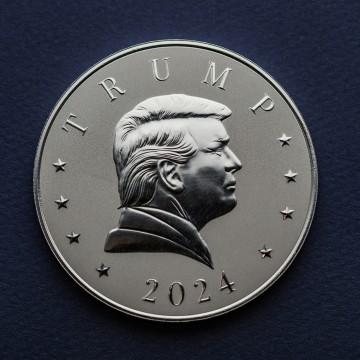Jun 26 2025
Meme coins: madcap or mainstream?
What is a meme coin?
Around since the early 2010s, Investopedia defines meme coins as a cryptocurrency created to follow trends, employ humour, and build a sense of community to attract users.
Bear in mind that a cryptocurrency is a type of digital currency that can be used to make direct payments between individuals via an online system. They have no legislated or intrinsic value.
As Investopedia explains: “Similar to many cryptocurrencies, meme coins generally do not have anything backing them or generating value other than belief, hype, speculation, and hope.”

Speculators often use meme coins to make money, or they can be a means for fans to show support for a celebrity, or they can form part of internet subcultures. For example, rapper Kanye West has his own meme coin - $YE.
While they often start as an online joke or prank, some, such as Dogecoin (Do Only Good Everyday), one of the original meme coins, have been gaining traction. In recent years, more retailers around the world have been accepting Dogecoin (and some other meme coins) as a form of payment. Tesla has done this for specific products.
How do you use them?
The value of meme coins is driven by community hype, social media momentum, or their association with celebrities. Social media plays a big part in promoting them.
They can be used in peer-to-peer payments, speculative investing, or trading. However, they currently have limited real-world value, particularly in New Zealand, which is still in the early stages of cryptocurrency adoption at the checkout. You couldn’t walk into any old shop and buy something with meme coins.
However, third-party payment systems are developing that connect meme currencies for use in the real world more easily.
Why are people talking about them?
They’ve been making headlines recently and have experienced a resurgence following Donald Trump's victory in the 2024 US presidential election. He launched a digital coin called $TRUMP before his second inauguration, which became one of the hottest crypto coins, shooting up to US$45 (from an opening price of approx. US$28) within a day, before falling back down again (at the time of writing it was valued at around US$9). It reportedly made him several billion dollars.
In May, media reported that Trump held a black-tie meme coin gala at his Virginia golf club, with about 220 people attending. Those who received an exclusive invitation did so because they had spent a combined US$148 million (NZ$249 million) on the US president’s $TRUMP meme coin.
Are they risky?
As you might imagine, meme coins are highly volatile in terms of their value. Because anyone can set them up, they’re also open to use by scammers. Furthermore, they’re vulnerable to ‘pump and dump’ scenarios – where they get a lot of hype, causing a rush to buy, which rapidly inflates the value. Then, a rapid sell-off can occur, as those who bought in early seek to profit from the price surge, which causes the value to plummet. It’s this sort of pattern that leads meme coins to be more often associated with gambling than sensible investing.
It’s also important to consider that meme coins have the added risk of the individuals behind them just abandoning the project. Particularly if it was all just intended for a laugh. It’s no joke for those left holding a worthless asset, of course.
This article is for information purposes only. It does not constitute financial advice. Anyone interested in meme coins should seek professional advice and understand the risks.
Written by:
Sonia Speedy
Sonia Speedy has been a journalist for over 20 years, working in newspapers, magazines and radio. She also runs an online platform for parents at familytimes.co.nz. She lives on the Kāpiti Coast with her young family and loves writing stories that help make people's lives easier.